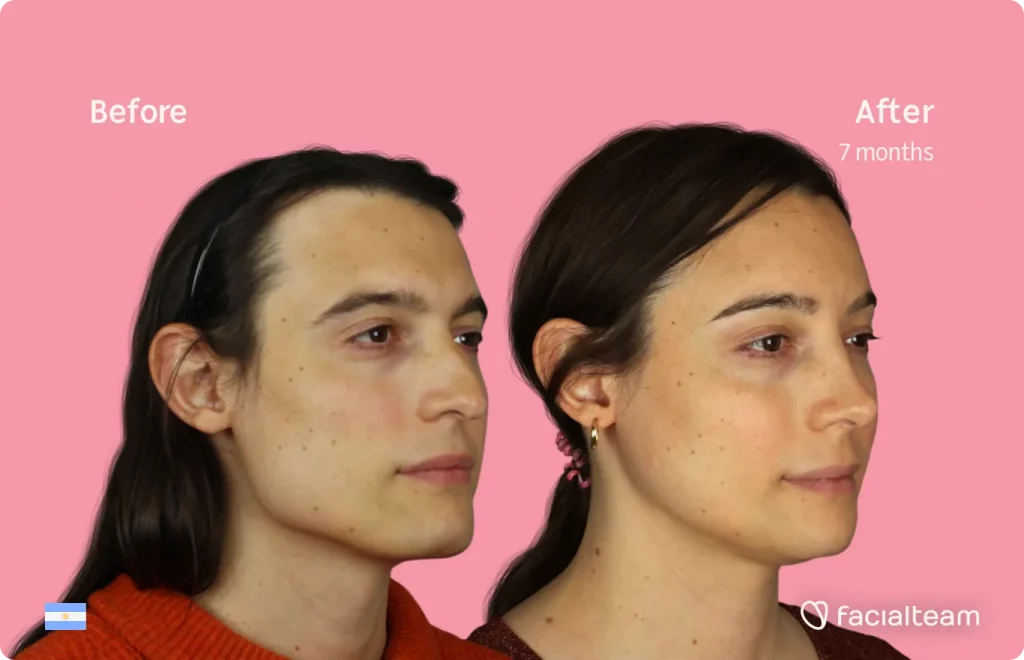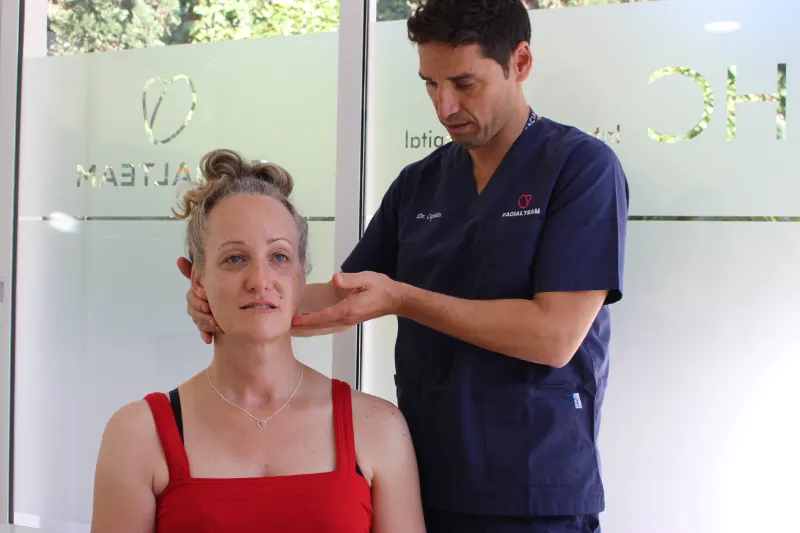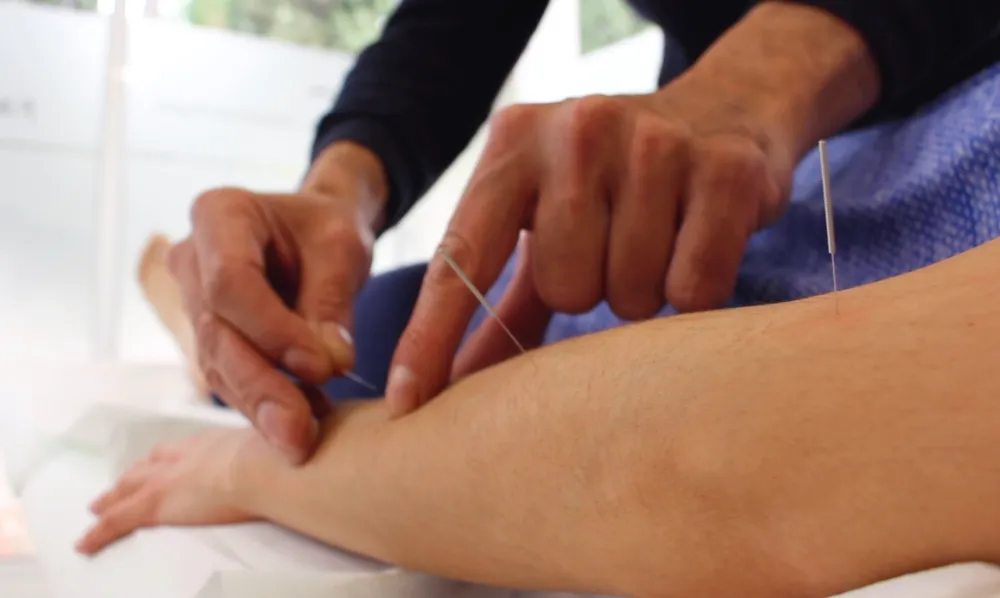Sagging Skin After Jaw Contouring Surgery: Debunking Myths

Facial feminization surgery can result in a more delicate jawline, for a typically feminine facial shape. This may involve mandibular and mentonian basal contour remodeling surgery, also known as JAWContour® at Facialteam.
In this article, we will clarify some of the myths about sagging skin after jaw contouring surgery. Yet first, it is important to determine if jaw or chin feminization are viable options in each case.
Evaluating the Need for Jaw Contouring Surgery
While jaw contouring surgery is often recommended for individuals seeking facial feminization, it is crucial to determine whether it is truly beneficial on a case-by-case basis. The surgery is typically indicated for those who require adjustments to the height, width, or shape of their mandibular bone.
However, you may want to avoid altering a well-defined or androgynous jawline simply for the sake of achieving a more rounded appearance, as genderless features can be just as feminine and attractive as rounded ones.
Preserving Individuality and Avoiding Trend-Driven Procedures
Think twice about standardizing your facial features in pursuit of trends, at the expense of your individuality. For example, the famous V-line jaw and chin surgery is currently popular in Asia but may not be suitable, nor achievable, for everyone due to anatomical limitations.
Sagging Skin after Jaw Contouring Surgery
Now, let’s clarify certain postoperative results: sagging skin after jaw contouring surgery is a consequence, rather than a failure or complication.
While the bone can be reshaped quickly, the skin, fat, and musculature require time to adapt to the new structure. In some cases, the soft tissues may not fully readapt, resulting in sagging. Also, loose skin typically is more indicative of ageing rather than gender. It is a potential consequence of many types of invasive surgeries.
Addressing Sagging Skin During Surgery
During the procedure, efforts are made to facilitate the readaptation of soft tissues. However, performing additional procedures such as a cervicofacial lift for every patient is not practical, in part because only 1-5% of patients actually need further soft tissue adjustments.
Moreover, the surgeon is considering the ideal conditions for your healing and to avoid further potential risk of complications. That is why it is not ideal to perform lifting procedures immediately after jaw surgery, due to the increase in technical errors and prolonged recovery times.
JAWContour® Statistics and Insights
In a comprehensive study conducted over three years (2020-2022), we analyzed skin sagging cases after JAWContour® surgery and discovered the following trends:
- Incidence of sagging
Out of 606 JAWContour® procedures, only 37 (6%) cases resulted in noticeable neck skin sagging that significantly impacted the patient. It is important to note that most of these cases (65%) displayed mild or very mild sagging. Over time, the incidence of sagging has decreased from approximately 10% in 2020 to 3% in 2022. - Age
Our study found no significant differences in age among patients, with the range spanning from 22 to 52 years. - Procedure type
The primary factor contributing to these complications is the reduction in bone height. Incorporating a chin advancement procedure during surgery serves as a protective measure. In general, surgeries involving both jaw and chin are more likely to result in sagging compared to those focusing solely on the chin. - Future outlook
As bone anchoring techniques for soft tissues continue to evolve, coupled with the use of Ultraformer III (HIFU technology) during surgical interventions, we expect a further decline in such complications.
Post-Surgery Recovery and Minimizing Swelling: Tips and Guidelines
It is essential to set realistic expectations following jaw or chin contouring surgery. Initially, you may experience swelling and discomfort, and your appearance may not be as desired for several weeks. The final result you envision will take months to fully materialize.
Sagging skin is not entirely preventable, but it only affects a small percentage of patients (between 1 to 5%). It is a consequence associated with the amount of bone removed, your skin and muscles’ ability to adapt to the new contour, and your pre-existing condition.
To expedite the reduction of swelling, consider the following recommendations:
- Maintain an active lifestyle, while avoiding intense exercise for six weeks.
- Stimulate your lymphatic drainage system through massages, therapies, and specific nutraceuticals.
- Wear compression garments as instructed by your surgeon.
By following these guidelines, you can facilitate a smoother recovery process and achieve optimal results from your jaw contouring surgery.
Solutions for Sagging Skin After Jaw Contouring Surgery
For the majority of patients (95%), sagging skin will not be an issue following jaw contouring surgery. If sagging does occur, the treatment will vary based on the severity.
For mild cases, non-surgical therapies such as high-intensity focused ultrasound (HIFU) or RadioFrequency (FaceTite) treatments can be used. These therapies have minimal recovery times and can help tighten the superficial muscle fascia and/or coagulate subcutaneous fat.
For more severe cases, surgical interventions may be necessary, such as platysmaplasty or a low cervical-facial mini-lift.
Platysmaplasty is a procedure that targets the neck area by tightening the platysma muscle and removing excess fat, resulting in a more defined jawline and reduced sagging. This procedure can be performed on its own or in conjunction with liposuction for optimal results.
A cervical-facial mini-lift focuses on the lower part of the face and neck, lifting and firming up the sagging skin to achieve a rejuvenated and more youthful appearance. This procedure is less invasive than a full facelift, with a shorter recovery period and less scarring.
Both of these procedures may require 1-2 weeks of recovery time, but are generally not associated with significant pain or work limitations.
Complementary Facial Soft Tissues Procedures
Platysmaplasty
Platysmaplasty is a specialized facial soft tissue surgery focused on tightening and repositioning the platysma, restoring a more defined and youthful neck and jaw contour.
The platysma, a thin sheet of muscle extending from the collarbone to the lower face, can lose its tightness over time due to aging, resulting in visible bands or sagging in the neck region.
This tightening not only eliminates visible bands but also contributes to a smoother and more sculpted neck appearance.
Platysmaplasty is a highly recommended procedure to be combined with our JAWContour® procedure.
Key Takeaways
Jaw contouring surgery can be a highly effective procedure for facial feminization, but it is essential to approach it with a personalized mindset rather than following trends. Keep in mind that:
- Not all patients require jaw contouring surgery, and androgynous features can be just as feminine and attractive as rounded ones.
- Sagging skin after jaw contouring surgery is a consequence, not a failure or complication, and occurs in a small percentage of patients.
- Non-surgical therapies like HIFU and radiofrequency treatments can address mild sagging, while surgical interventions may be needed for more severe cases.
- Preserving individuality and avoiding mainstream fads is more likely to beget a natural and satisfying outcome.
By understanding these key points, patients and surgeons can work together to achieve the best possible results in facial feminization surgery, while minimizing the risk of unwanted consequences such as sagging skin.







